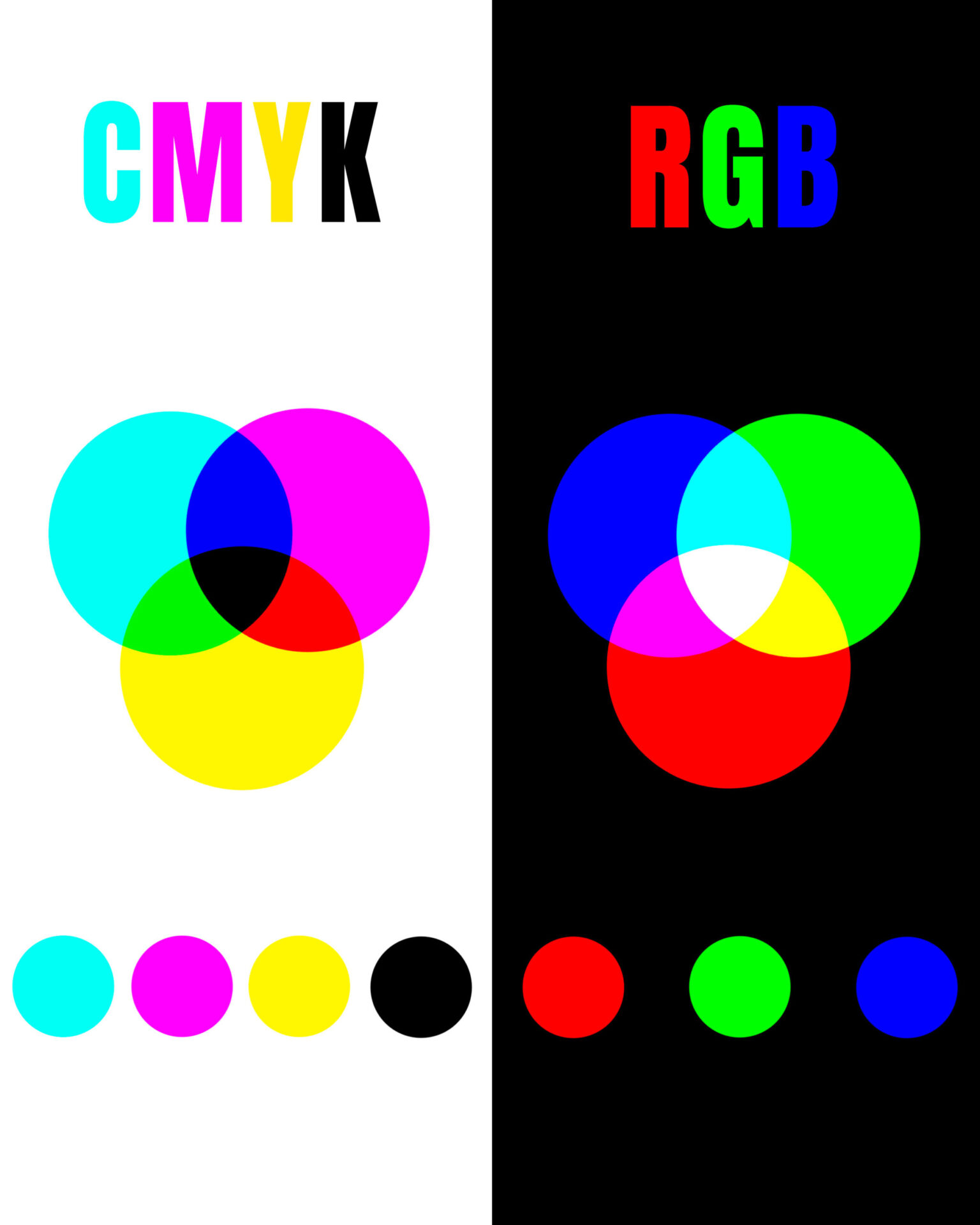Introduction
When you hit “print,” you’re unleashing a carefully orchestrated dance of color but what happens behind the scenes? Unlike your monitor, which displays colors in RGB (Red, Green, Blue), professional printers use a different language: CMYK, Cyan, Magenta, Yellow, and Key (Black). Understanding how CMYK works can help you make better decisions about file preparation, color accuracy, and final print results. Introduction
When you hit “print,” you’re unleashing a carefully orchestrated dance of color but what happens behind the scenes? Unlike your monitor, which displays colors in RGB (Red, Green, Blue), professional printers use a different language: CMYK, Cyan, Magenta, Yellow, and Key (Black). Understanding how CMYK works can help you make better decisions about file preparation, color accuracy, and final print results.
Why CMYK Instead of RGB?
RGB is additive, it builds color by combining light. It’s perfect for screens, but not for paper. Printers work subtractively. In CMYK, each ink subtracts brightness from white paper. When you layer these four inks, they absorb different wavelengths of light, producing a full range of printed colors.
The Role of Each Color
- Cyan, Magenta, Yellow: These are the primary subtractive colors. Combined in different ratios, they can create a wide spectrum, from subtle pastels to rich, saturated tones.
- Key (Black): Black is added for depth, detail, and contrast. Without it, dark areas can look muddy or oversaturated. Black ink sharpens images and improves tonal accuracy, especially in shadow areas.
How a Printer Builds a Print
Most professional printers, like my Canon PRO series, use a combination of CMYK inks along with expanded colors (like gray, red, or blue) for smoother gradients and more accurate reproduction. Here’s what happens during a typical print job:
- The printer receives your image file, ideally already converted to CMYK or managed with an ICC profile for precise translation.
- Tiny droplets of ink are sprayed onto the paper in specific patterns often thousands per square inch.
- The paper absorbs ink at different rates depending on its coating and texture, affecting final color and clarity.
- The result is a layered print, where colors build up gradually to form a complete image, rich in tone and detail.
Why It Matters for Artists and Photographers
Understanding CMYK helps bridge the gap between what you see on screen and what comes out on paper. A few tips:
- Soft proof your images using a calibrated monitor and ICC profiles.
- Avoid oversaturated RGB tones that may not translate well to CMYK.
- Choose paper types that support your color goals matte papers often mute colors, while glossy or baryta papers enhance contrast and saturation.
Final Thoughts
At Photographic Solutions Visual Arts, we specialize in honoring the full potential of your image not just by pressing “print,” but by understanding how ink, paper, and color science work together. Whether you’re printing fine art, a portfolio piece, or a treasured photo, CMYK is the silent craftsman behind the scenes, helping your vision come to life.


